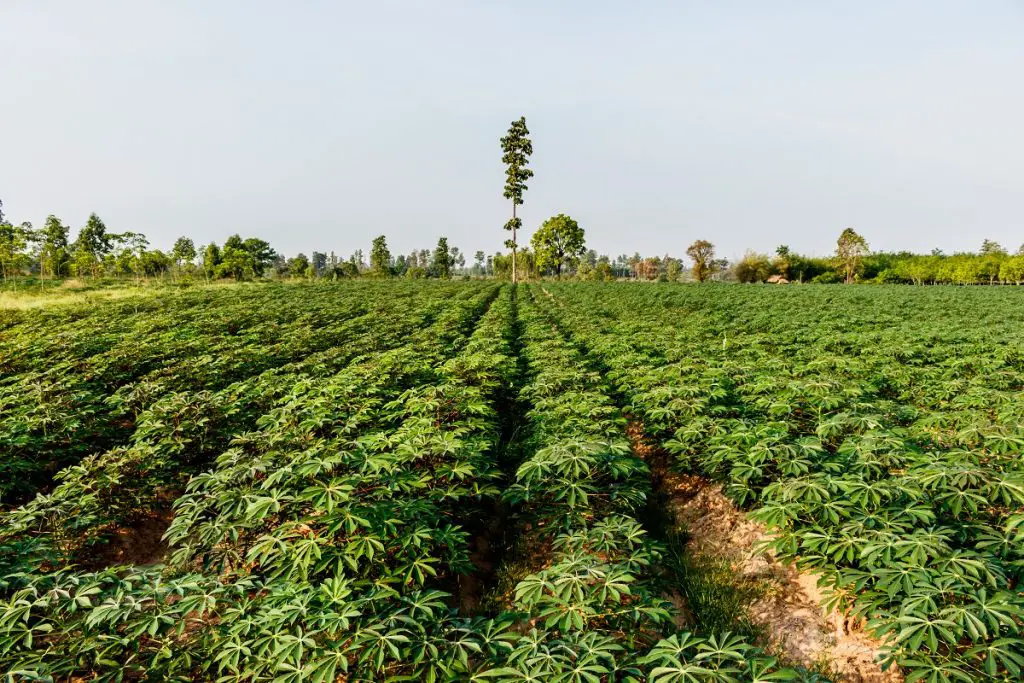In 2016, Nigeria raised the economic profile of cassava in a process aimed at improving food security and the profitability in the agriculture industry.
Africa’s largest economy was turning its attention to strengthening not only production but also the consumption of staple crops, key among them the tuber. Nigeria’s hopes in 2016 were to extract greater benefit from cassava which is the most widely produced crop in the West African country.
According to the African Development Bank (AfDB), Nigeria is the world’s largest producer of cassava growing more than a third its nearest competitor, Thailand.
West Africa’s cocoa coup and what it could mean for the continent
So important is the food crop that over half a billion people globally depend on it as a major food source.
Interestingly, the crop is mostly used in tropical countries across Africa, Asia, and Latin America making it the third-largest source of calories after rice and corn.
The advantage that cassava farmers have is that it can grow well in poor soils and withstand droughts making it an ideal crop to cultivate in places where other crops do not do well.
Cassava, also nicknamed “the bread of the tropics,” is nutrient-rich and is dominated by smallholder farmers across the continent.
In Nigeria, these smallholder farmers are responsible for 90 per cent of its production.
Despite being the world’s largest cassava producer, Nigeria’s ability to process cassava remains limited.
This denies the 195.9 million-people economy the much-needed revenues which could be derived from processing higher-value cassava-derived items like tapioca and glucose which are easily exportable.
In comparison with the second-largest producer, cassava is more of a cash crop than a staple in Thailand where most of the root is processed and exported.
Continent-wide, the importance of the crop can no longer be underestimated leading to the formation of a regional forum on cassava by Central African countries with the aim of facilitating dialogue and value addition to cassava farming.
The biennial forum addresses challenges and opportunities in cassava farming in Cameroon, Central African Republic, Chad, Congo, Gabon and the Democratic Republic of Congo.
Counting the cost: Aflatoxin invasion and Africa’s food insecurity
The UN-FAO notes that Africa produces about half of the world’s cassava which is cultivated in about 40 African countries. For perspective, Nigeria, the Congo and Tanzania produce about 70 per cent of Africa’s total cassava output, according to IFAD and FAO.
With the continent continually racked with hunger and poverty, Africa could turn around its economy by adopting cassava production.
FAO says that cassava has the potential to transform the continent’s economy by increasing farm incomes, reducing rural and urban poverty while helping close the food gap.
The UN body notes that the cassava holds a great promise for feeding Africa’s growing population since it can be produced at whichever scale especially from family labour since it is a low-risk crop for poor farmers.
Kenya is planning on introducing genetically modified (GM) cassava which is said to be resistant to the cassava brown streak disease (CBSD). This plan by the Kenya Agricultural and Livestock Research Organization (KALRO) follows many years of research and evaluation in the laboratory, greenhouse, and in confined field trials.
Already, KALRO has applied to the country’s National Biosafety Authority (NBA) for environmental release (open field cultivation) and placing on the market the GM cassava.
Those behind the CBSD resistant cassava say that it will significantly contribute to the attainment of food security in Kenya while creating thousands of jobs along the value chain due to the crop’s potential industrial use.
KALRO notes that cassava productivity in East Africa has been hampered by diseases including CBSD.
For the continent, cassava is an important cash crop which is used in the manufacturing of biofuels, beverages and processed products. This provides steady markets and income for smallholder farmers making it a worthwhile investment for governments seeking to empower farmers and creating food secure economies.
For this to work, the government should create systems that reduce post-harvest losses since the cassava roots perish quickly and often spoil within 48 hours if left unprocessed. Smallholder farmers need to be assisted to access processors and storage facilities with reliable transportation to cushion them from the crop’s perishability.
The Deutsche Gesellschaft für Internationale Zusammenarbeit (GIZ) notes that post-harvest losses for cassava are high amounting to more than US$600 million in Nigeria alone.
